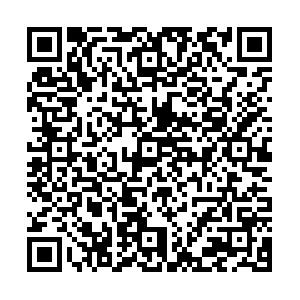Correlation of Adult Urine Iodine Level and Thyroid Disease
-
摘要:
目的 了解昆明地区成年人尿碘水平的分布与甲状腺疾病的关系,为该地区甲状腺患者补碘提供科学依据。 方法 采用前瞻性研究,将2018年1月至12月,在昆明医科大学附属甘美医院内分泌科住院及门诊就诊的甲状腺疾病患者207例作为病例组,且按病种分为桥本甲状腺炎组、甲状腺功能亢进组、甲状腺功能减退组、甲状腺结节组。同时选择在门诊健康体检者59例作为对照组。各组均应用砷铈催化分光光度法测定尿碘含量,并应用化学发光免疫分析技术测定血清游离三碘甲状腺原氨酸(FT3)、游离甲状素(FT4)、促甲状腺素(TSH)、甲状腺过氧化物酶抗体(TPOAb)、甲状腺球蛋白抗体(TgAb),病例组和对照组均进行甲状腺超声检查,并根据检测结果,对不同尿碘水平甲状腺疾病进行统计学分析。 结果 (1)桥本甲状腺炎组、甲状腺功能亢进组、甲状腺功能减退组、甲状腺结节组及对照组的尿碘中位数分别为177.4 µg/L、171.6 µg/L、105.2 µg/L、151.3 µg/L、178.3 µg/L,多组尿碘中位数比较差异有统计学意义(P < 0.05),甲状腺功能减退组中位数显著低于正常组,差异有统计学意义( P < 0.05),余各组间比较差异无统计学意义( P > 0.05);(2)各甲状腺疾病组中均有较高比例的高碘和低碘情况存在;(3)各组的尿碘水平与FT3、FT4、TSH、TPOAb、TgAb间均无统计学意义( P > 0.05)。 结论 昆明地区成年人碘营养处于足量水平,因个体差异,补碘需做到科学合理。低尿碘与甲状腺疾病具有相关性,碘摄入不足可促使甲状腺疾病高发。 Abstract:Objective To understand the relationship between the distribution of urinary iodine level and thyroid diseases in adults in kunming, and to provide scientific basis for iodine supplementation in thyroid patients in this region. Method In this prospective study, 207 patients with thyroid diseases who were admitted to the department of endocrinology and outpatient department of the affiliated calmette hospital of kunming medical university from January to December 2018 were included as the case group, and were divided into hashimoto thyroiditis group, hyperthyroidism group, hypothyroidism group, and thyroid nodule group. At the same time, 59 healthy patients in the outpatient department were selected as the control group. Groups are used arsenic cerium catalytic spectrophotometry determination of urine iodine, and application of chemiluminescence immunoassay technology to three iodine determination of serum free thyroid glycine (FT3) and free thyroid hormone (FT4), thyroid stimulating factor (TSH), thyroid peroxidase antibody (TPOAb), thyroglobulin antibody (TgAb), the case group and the control group were performed thyroid ultrasound, and according to the test results, statistical analysis was carried out on the different urine iodine level of thyroid disease. Results (1) For patients in hashimoto thyroiditis and thyroid function hyperfunction group, hypothyroidism and thyroid nodule group and control group, the median of urinary iodine was 177.4 g/L , 171.6 g/L, 105.2 g/L, 151.3 g/L and 178.3 g/L, respectively. The median of hypothyroidism group was significantly lower than normal group, the difference was statistically significant (P < 0.05), there was no statistically significant difference between other groups ( P > 0.05). (2) A high proportion of high and low iodine was found in each thyroid disease group. (3) There was no statistical significance between different groups in the urinary iodine levels and FT3, FT4, TSH, TPOAb and TgAb ( P > 0.05). Conclusion The iodine nutrition of adults in Kunming is at a sufficient level, and the supplement of iodine should be individualized, scientific and reasonable. There is a correlation between low urinary iodine and thyroid diseases. Insufficient iodine intake can promote the high incidence of thyroid diseases. -
Key words:
- Urine iodine /
- Thyroid /
- Hashimoto thyroiditis /
- Hypothyroidism /
- Thyroid nodule
-
表 1 各甲状腺疾病组和对照组尿碘水平及分布[M(P25,P75)]
Table 1. Urinary iodine levels and distribution in thyroid disease group and control group [M(P25,P75)]
组别 n 中位数(μg/L) 尿碘(μg/L)频数分布[n(%)] 0~ 100~ 200~ 300~ 桥本甲状腺炎组 45 177.4(95.7,269.3) 13(28.9) 15(33.3) 9(20.0) 8(17.8) 甲状腺功能亢进组 28 171.6(95.9,245.6) 8(28.6) 11(39.3) 4(14.2) 5(17.9) 甲状腺功能减退组 43 105.2*(74.5,168.0) 20(46.4) 15(34.9) 2(4.7) 6(14.0) 甲状腺结节组 91 151.3(84.1,205.7) 26(28.6) 40(44.0) 17(18.6) 8(8.8) 对照组 59 178.3(136.4,241.1) 5(8.5) 30(50.8) 18(30.5) 6(10.2) 注:与对照组比较,*P < 0.05。 表 2 各甲状腺疾病组及对照组与甲状腺功能指标的相关性分析
Table 2. Correlation analysis between thyroid disease group and control group and thyroid function index
组别 FT3 FT4 TSH TPOAb TGAb r P r P r p r P r P 桥本甲状腺炎组 −0.053 0.730 0.068 0.656 −0.232 0.125 −0.023 0.882 −0.038 0.811 甲状腺功能亢进组 0.016 0.939 0.032 0.873 0.308 0.118 −0.059 0.771 0.207 0.301 甲状腺功能减退组 −0.156 0.317 −0.237 0.126 −0.063 0.688 −0.228 0.147 −0.175 0.267 甲状腺结节组 0.179 0.209 0.041 0.776 −0.135 0.344 −0.166 0.243 −0.048 0.740 对照组 0.138 0.315 0.205 0.133 −0.076 0.580 0.079 0.616 0.202 0.195 -
[1] Hetzel B S. Iodine deficiency disorders (IDD) and their eradication[J]. Lancet,1983,2(8359):1126-1129. [2] Khuen B. Iodine deficiency may impair fertility[J]. Jama,2018,319(8):760. [3] 阎玉芹. 保证全民适宜的碘营养是碘缺乏病防治工作的长期任务[J]. 中国地方病学杂志,2005,24(3):237-238. [4] Song J,Zou S R,Guo C Y,et al. Prevalence of thyroid nodules and its relationship with iodine status in Shanghai:a population-based study[J]. Biomed Environ Sci,2016,29(6):398-407. [5] WS/T107-2006, 尿中碘的砷铈催化分光光度法[S]. 北京: 中华人民共和国卫生部, 2006. [6] WHO/UNICEF/ICCIDD. Assessment of the iodine deficiency disorders and monitoring their elimination: a guide for programme managers[R]. Geneva: WHO, 2007: 32-34. [7] 中华医学会内分泌学分会. 成人甲状腺功能减退症诊治指南(2017)[J]. 中华内分泌代谢杂志,2017,33(2):167-180. doi: 10.3760/cma.j.issn.1000-6699.2017.02.018 [8] 中华医学会内分泌学分会. 中国甲状腺疾病诊治指南-甲状腺功能亢进症(2008)[J]. 中华内科杂志,2007,46(10):876-882. [9] Haugen B R,Alexander E K,Bible K C,et al. 2015 American thyroid association management guidelines for adult patients with thyroid nodules and differentiated thyroid cancer:The American Thyroid Association Guidelines Task Force on Thyroid Nodules and Differentiated Thyroid Cancer[J]. Thyroid,2016,26(1):1-133. doi: 10.1089/thy.2015.0020 [10] 中华医学会内分泌学分会. 《中国甲状腺疾病诊治指南》编委会. 中国甲状腺疾病诊治指南[J]. 中华内科杂志,2008,47(10):867-868. [11] Jang J,Kim Y,Shin J,et al. Association between thyroid hormones and the components of metabolic syndrome[J]. BMC Endocr Disord,2018,18(1):29. doi: 10.1186/s12902-018-0256-0 [12] Michael B Zimmermann,Pieter L Jooste,Chandrakant S Pandav. Iodine-deficiency disorders[J]. Lancet,2008,372(9645):1251-1262. doi: 10.1016/S0140-6736(08)61005-3 [13] Engle-Stone R,Vosti S A,Luo H,et al. Weighing the risks of high intakes of selected micronutrients compared with the risks of deficiencies[J]. Ann N Y Acad Sci,2019,1446(1):81-101. doi: 10.1111/nyas.14128 [14] Kjersti Sletten Bakken,Ingvild Oma,Synne Groufh-Jacobsen,et al. The Reliability of iodine concentration in diaper-retrieved infant urine using urine collection pads,and in their mothers’ breastmilk[J]. Biomolecules,2020,10(2):295. doi: 10.3390/biom10020295 [15] Ryoko Katagiri,Xiaoyi Yuan,Satomi Kobayashi,et al. Effect of excess iodine intake on thyroid diseases in different populations:A systematic review and meta-analyses including observational studies[J]. PLoS One,2017,12(3):e0173722. doi: 10.1371/journal.pone.0173722 [16] Wu L,Yu J C,Kang W M,et al. Iodine nutrition and thyroid diseases[J]. Zhongguo Yi Xue Ke Xue Yuan Xue Bao,2013,35(4):363-368. [17] Guo Y,Zynat J,Xu Z,et al. Iodine nutrition status and thyroid disorders:a cross-sectional study from the Xinjiang Autonomous Region of China[J]. Eur J Clin Nutr,2016,70(11):1332-1336. doi: 10.1038/ejcn.2016.82 [18] Ma H,Li L,Li K,et al. Hashimoto’ s thyroiditis,nodular goiter or follicular adenoma combined with papillary thyroid carcinoma play protective role in patients[J]. Neoplasma,2018,65(3):436-440. doi: 10.4149/neo_2018_170428N317 [19] 中华人民共和国卫生部. 食用盐碘含量(GB 26878-2011)[M]. 北京: 中国标准出版社, 2011: 252-254. [20] Du Y,Gao Y,Meng F,et al. Iodine deficiency and excess coexist in china and induce thyroid dysfunction and disease:a cross-sectional study[J]. PLoS One,2014,9(11):e111937. doi: 10.1371/journal.pone.0111937 [21] Laurberg P,Bulow P I,Knudsen N,et al. Environmental iodine intake affects the type of nonmalignant thyroid disease[J]. Thyroid,2001,11(5):457-469. doi: 10.1089/105072501300176417 -





 下载:
下载: 
